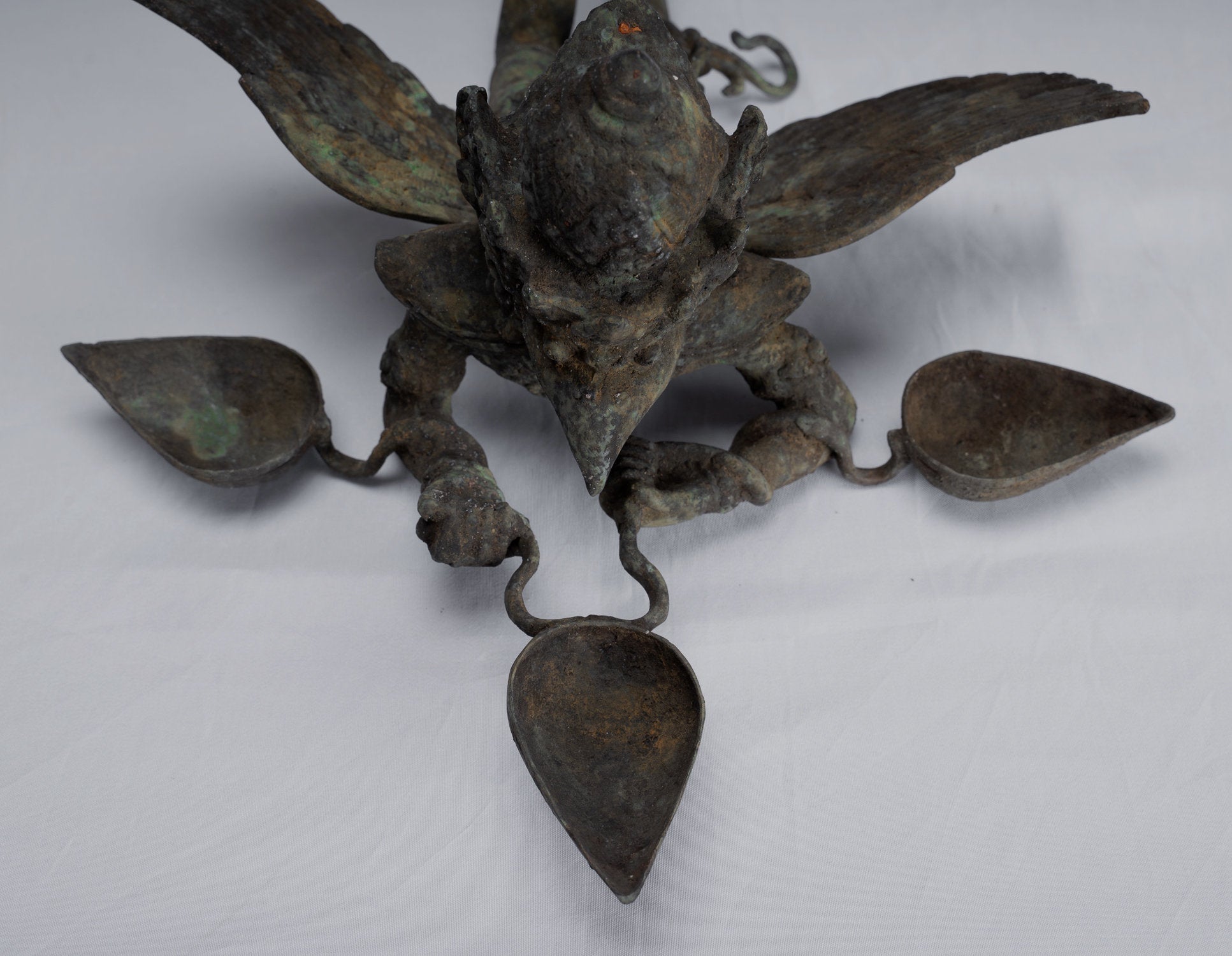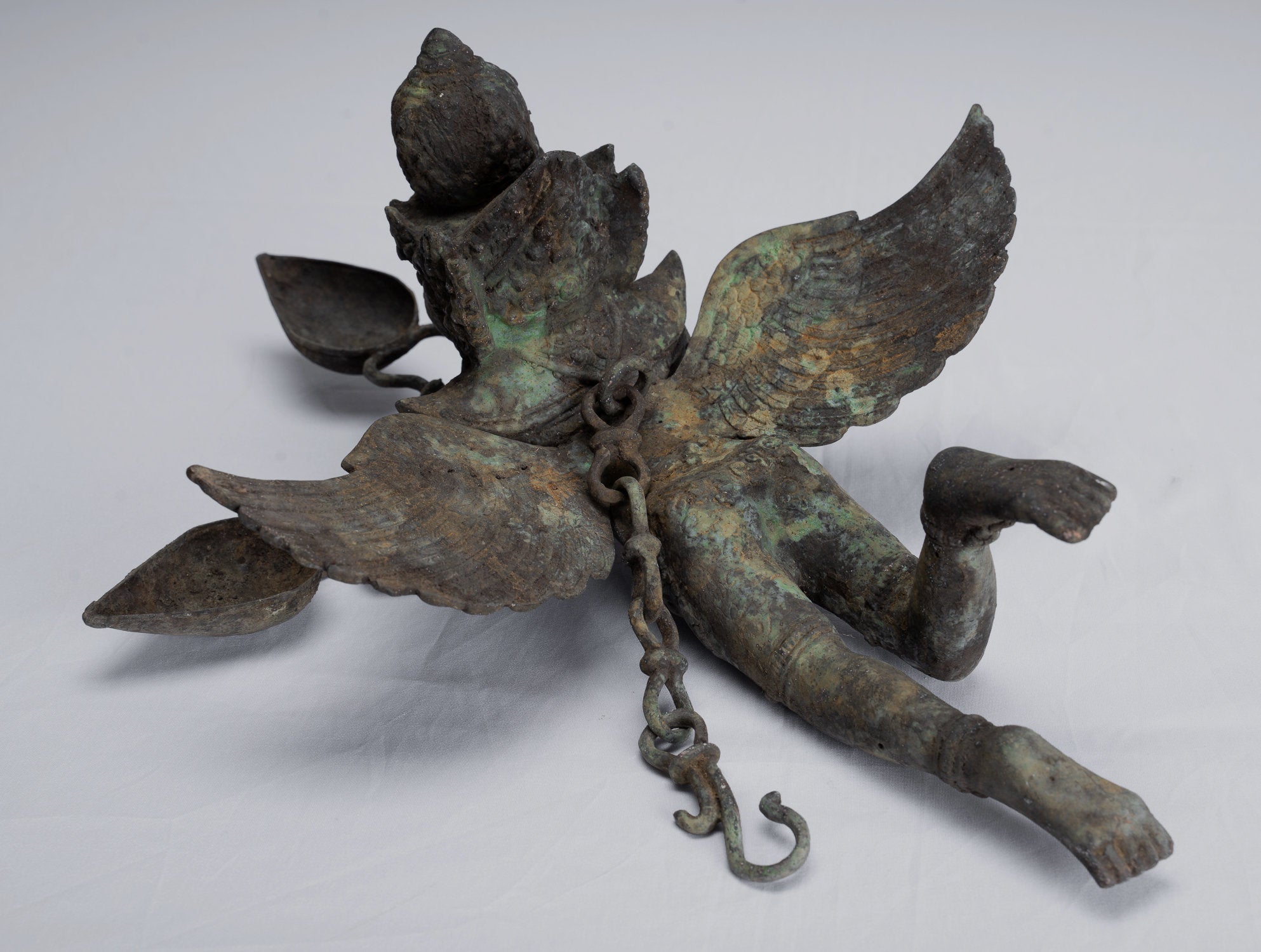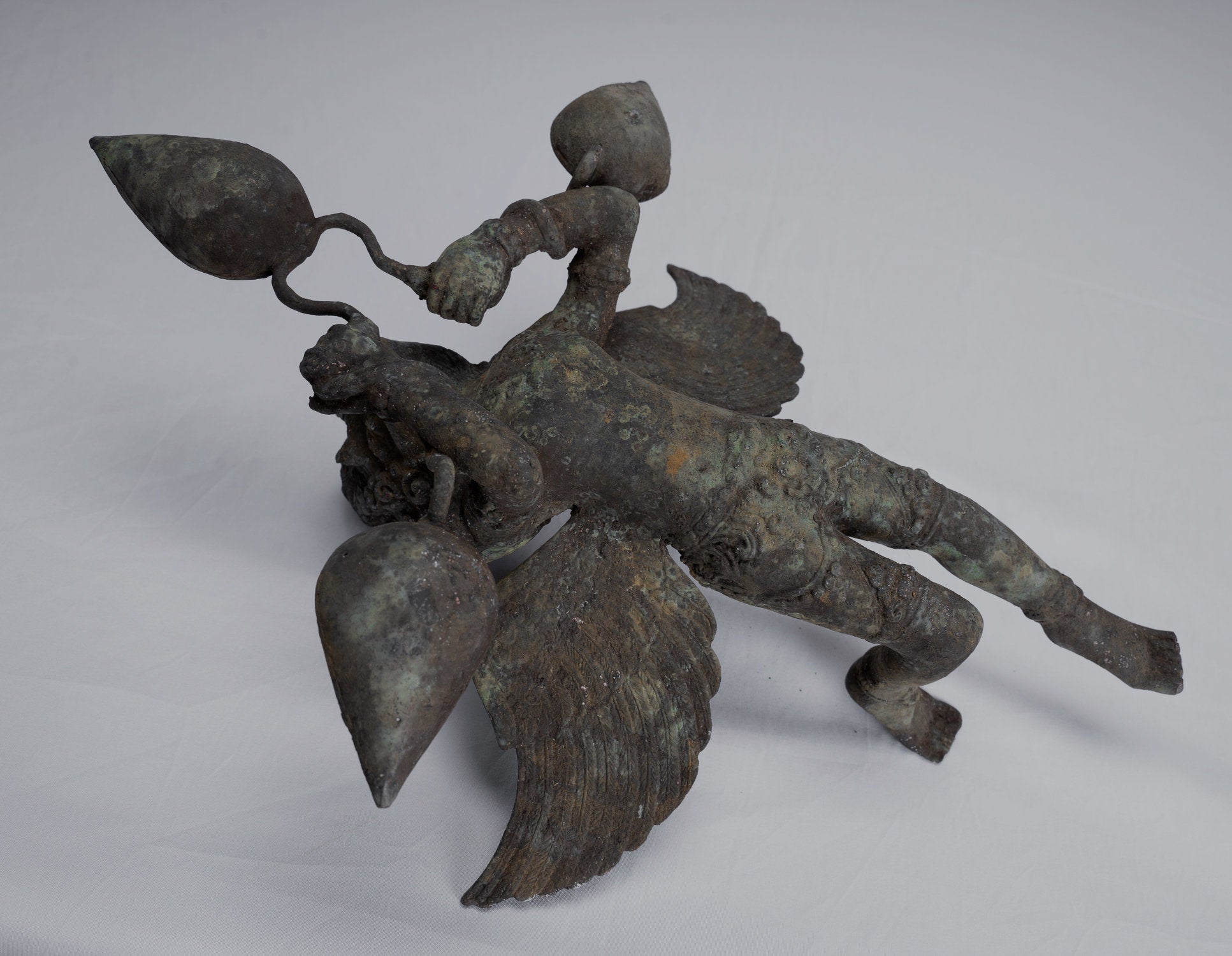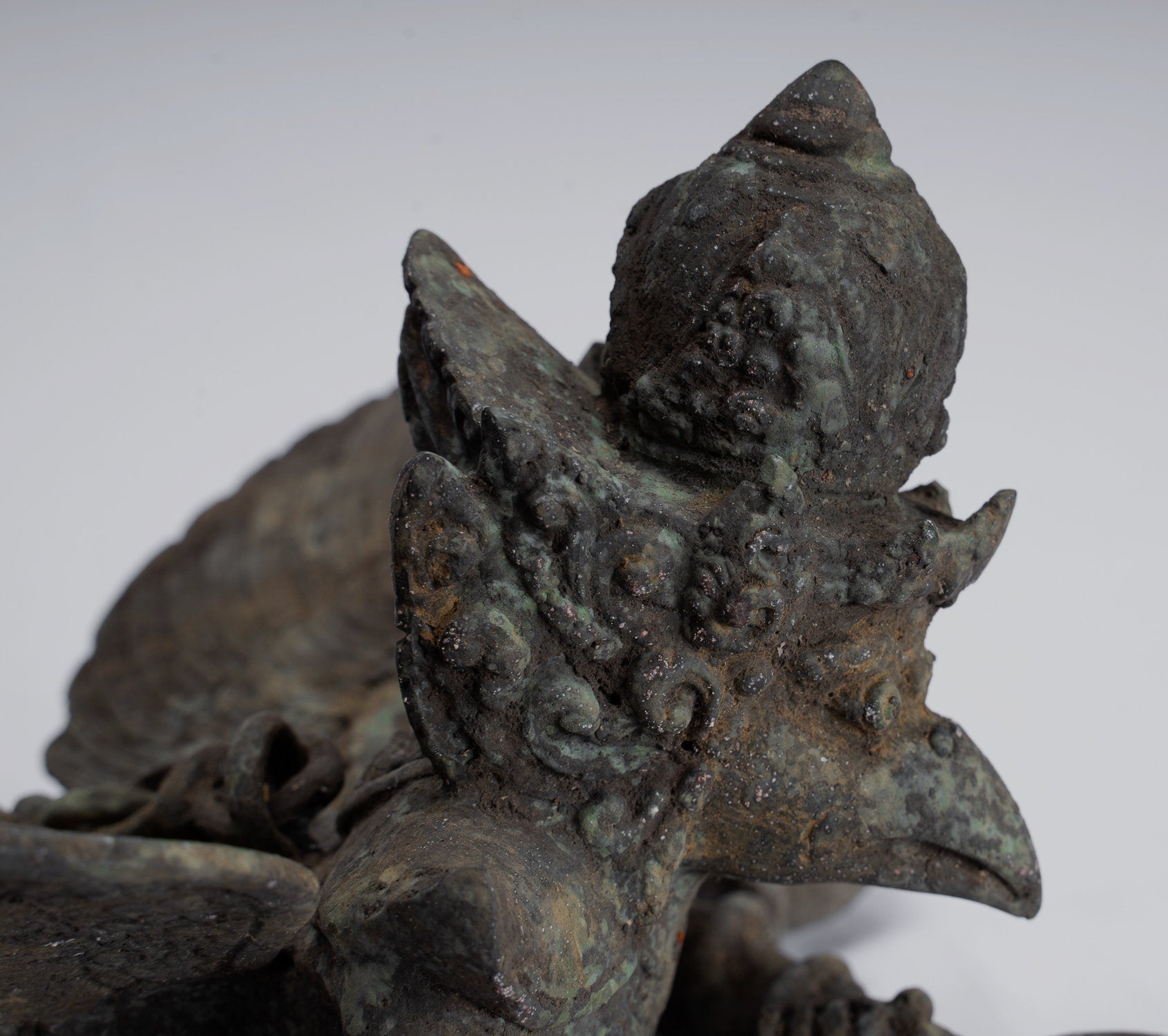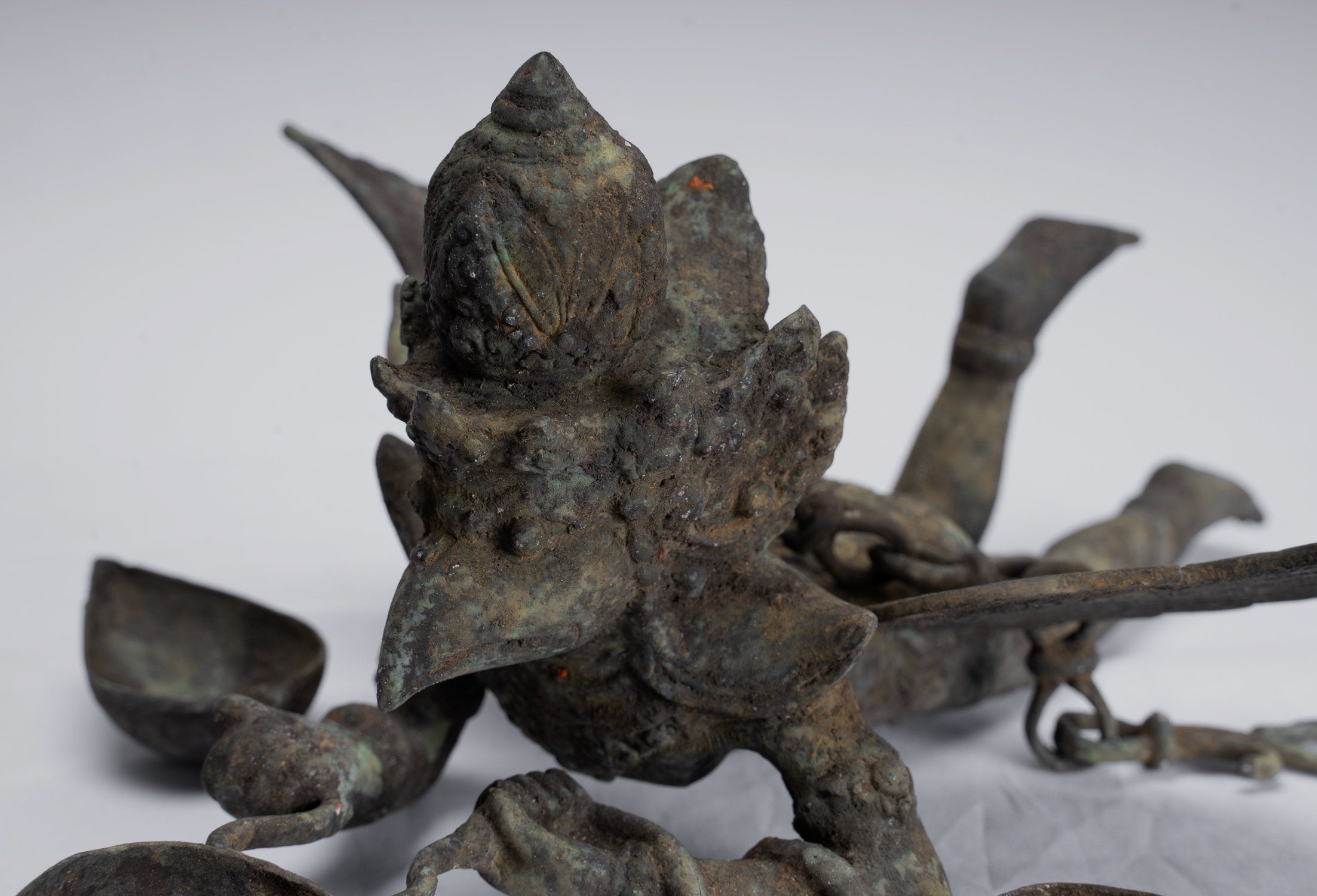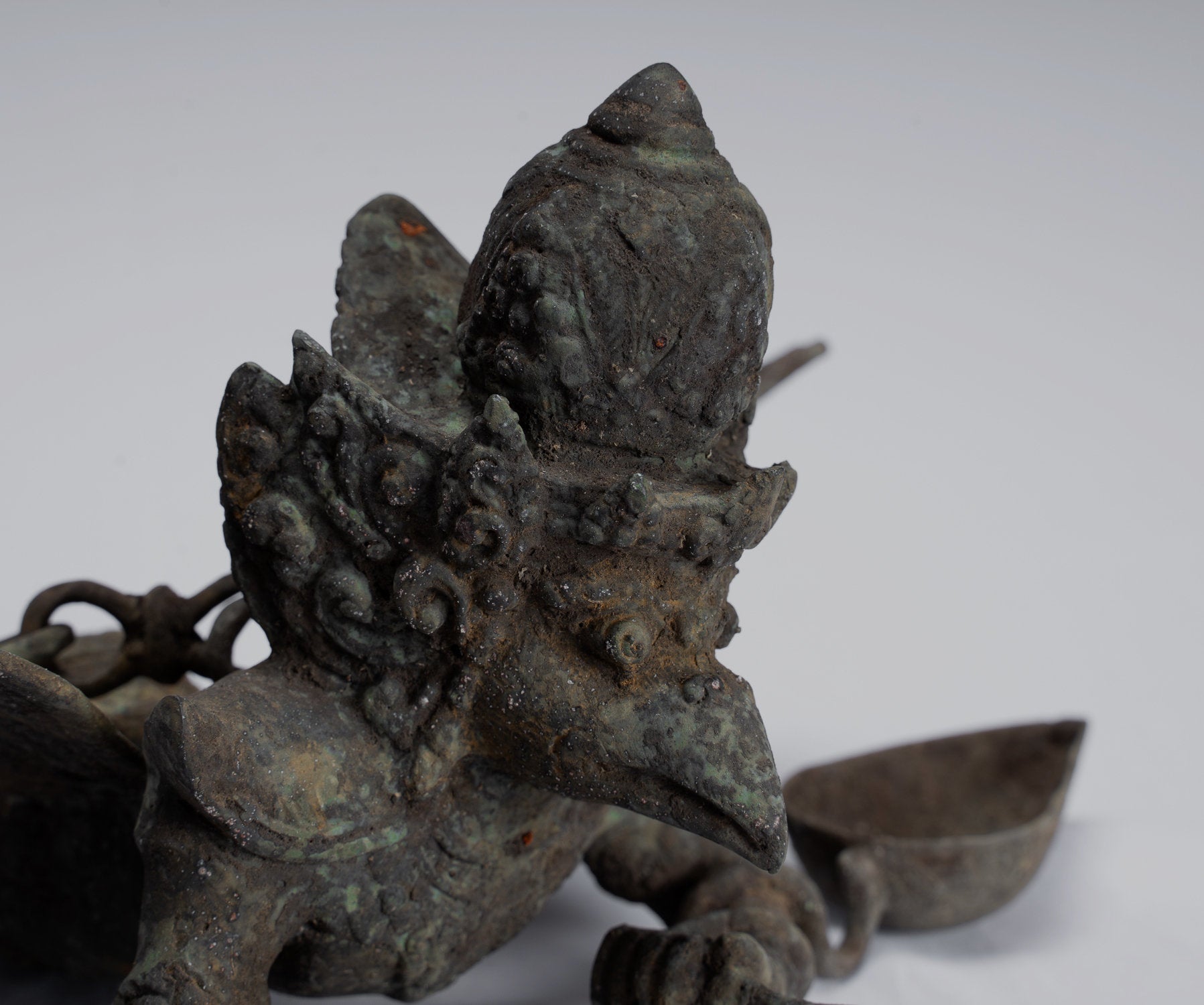-
Antique Indonesian Style Hanging Bronze Majapahit Java Garuda Vishnu Statue - 35cm/14"
Measures (Length) 35cm/14"
An antique Indonesian style bronze Garuda in the 13th century Javanese Majapahit style. The Garuda is cast in classic Indonesian Majapahit style.
Important in both Hindu and Buddhist religions the Garuda is a large mythical bird with a wing-span of many miles, the bearer of Vishnu.
Perhaps with a little 'poetic license' we are told that when the Garuda flaps it's wings hurricane winds arise that darken the sky and blow down houses. In both Thailand and Indonesia the Garuda is seen as both a National and Cultural symbol.
Here Garuda can be hung from a chain where he holds 3 oil pots.
The malachite patina and details of this piece are particularly appealing.
SATISFACTION GUARANTEE - We have been offering SE Asian Art for many years and are proud of the reputation we have developed for fair and honest listings. However, if for any reason, whatsoever, you are unhappy with your purchase please just let us know and we will provide a full refund. We want you to be 100% happy with your purchase.
-
The majority of orders will be shipped with DHL. This is a secure, express and fully tracked service.
Items less than 2Kg we typically ship using Royal Mail.
Once we receive your order we try to ship all orders the same or next working day.
Large and/or fragile pieces requiring palletising, specialist crating and/or extra packaging may take a little longer. Palletised shipments will be delivered curbside.
All orders over 35 GBP will be shipped free of charge.

-
We genuinely hope that all purchases delight.
However, if they do not, regardless of reason, we will refund all orders upon receipt of the unwanted item. Just notify us within 14 days of receiving your order that you wish to make a return and send the piece back to us with 30 days of delivery.
Let Us Help You Find The Piece You Desire
Let Us Help You Find The Piece You Desire
I received it today and am very pleased with the statue. I plan to place another order.
David, Miami, FL, USA
The piece arrived safe and sound today. It is absolutely gorgeous and a wonderful addition to our home!
Juliann, Washington D.C., USA
The elephant arrived safely. It’s beautiful...you are a gem! Thank you!
Frank, Gainesville, FL, USA





